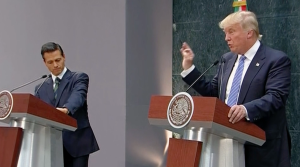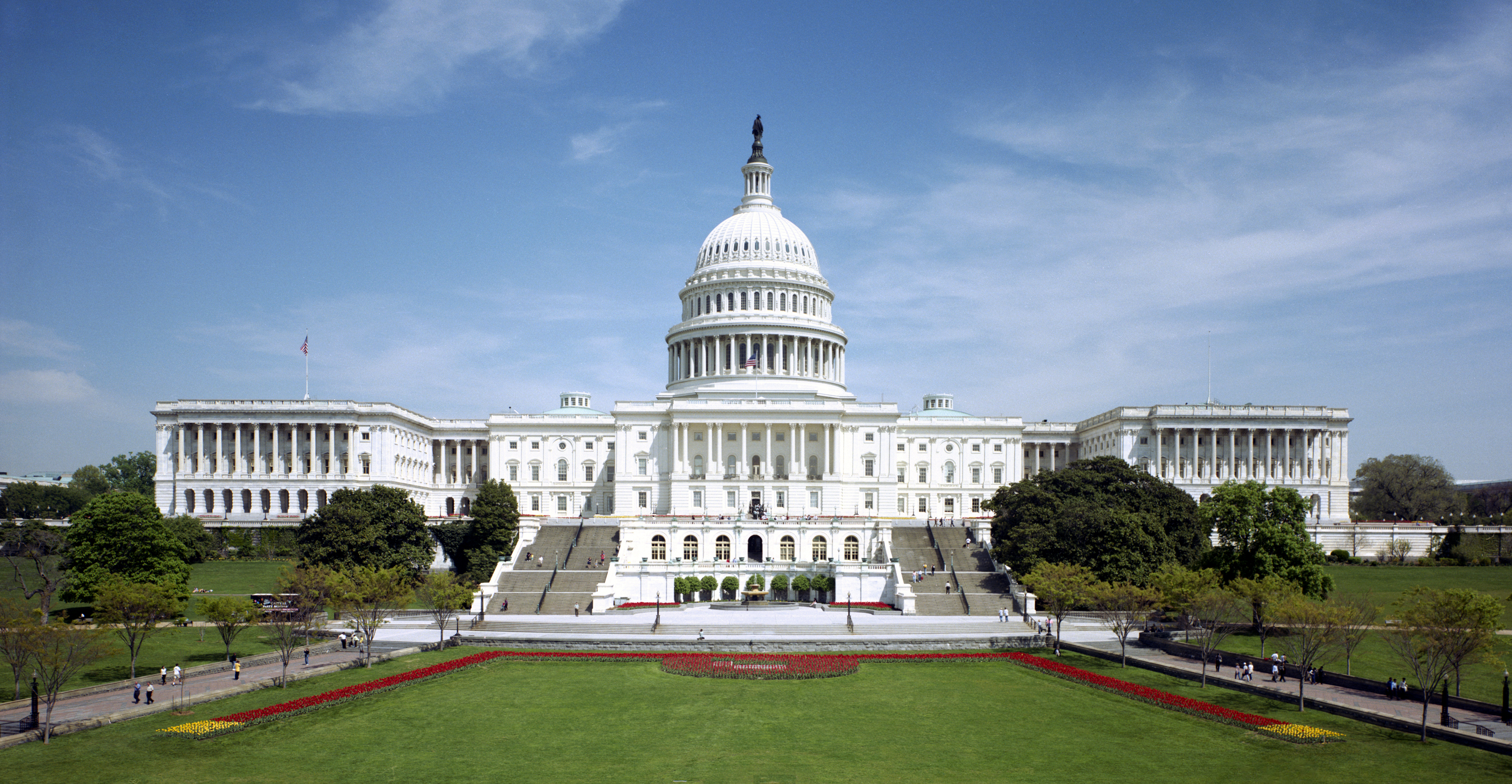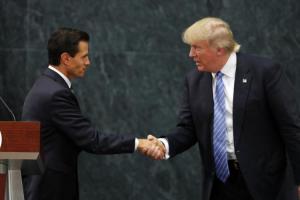Let me give President Enrique Peña Nieto a little credit for taking the initiative and setting up a meeting with President Trump. He is under a lot of political pressure south of the border. Let me give President Trump credit for accepting the visit. It shows me that both sides want to get something good started.
This is from the LA Times:
The Mexican president’s early visit to the Trump White House underscores the importance that Mexico City places on having smooth relations with the new U.S. administration, despite candidate Trump’s many broadsides against Mexico and Mexicans.
According to a statement released by the Mexican government, Peña Nieto told Trump on Saturday that he hopes to work together “with a focus on respect for the sovereignty of both nations and shared responsibility.”
Beyond the politics, Mexico and the U.S. have serious common interests, from cartels that kill Mexicans and bring drugs to the U.S. to over $500 billion in trade.
Sadly, many of Mr. Trump’s statements have actually been a huge boost for the Latin American left. In other words, Mr. Trump has become the latest version of the Ugly Gringo that so much of the left likes to scream about.
My hope is that President Trump understands the importance of a change in tone and a stable Mexico and Latin America.
Such lousy growth will put tremendous political pressures on center right leaders in Argentina, Chile, and even Mexico. It will be boost for q left that does not have answers but can march with anti-Trump placards and blame free market policies for the decline.
So let’s hope that President Trump sees the big picture when he sits down with President Pena-Nieto.
First, I support the border fence but constantly saying that Mexico will pay for it puts President Pena-Nieto in an awful position back home. In other words, build the fence and move on.
Second, we can renegotiate NAFTA and other trade deals but let’s not throw the baby out with the bathwater.
I understand the argument that NAFTA has taken some manufacturing south of the border, but it has also been great news for U.S. exporters, who are selling Mexico a lot of goods and services. This is a summary of our trade with Mexico:
Mexico was the United States’ 2nd largest goods export market in 2015.
U.S. goods exports to Mexico in 2015 were $236 billion, down 1.6% ($3.9 billion) from 2014 but up 97% from 2005.
U.S. exports to Mexico are up 468% from 1993 (pre-NAFTA).
U.S. exports to Mexico account for 15.7% of overall U.S. exports in 2015.
The top export categories in 2015 were: machinery ($42 billion), electrical machinery ($41 billion), vehicles ($22 billion), mineral fuels ($19 billion), and plastics ($17 billion).
U.S. exports of agricultural products to Mexico totaled $18 billion in 2015, our 3th largest agricultural export market.
Leading categories include: corn ($2.3 billion), soybeans ($1.4 billion), dairy products ($1.3 billion), pork & pork products ($1.3 billion), and beef & beef products ($1.1 billion).
U.S. exports of services to Mexico were an estimated $30.8 billion in 2015, 2.7% ($807 million) more than 2014, and 36.7% greater than 2005 levels.
It was up roughly 196% from 1993 (pre-NAFTA).
The United States has a services trade surplus of an estimated $9.2 billion with Mexico in 2015, down 12.7% from 2014.
Let me add a couple of points:
1) We’ve had surpluses with Mexico before and currently have a deficit. It changes as these things tend to do; and,
2) I see a lot of jobs in the U.S. when we exports billions of dollars in machinery, plastics and others. Some American companies are indeed making these and selling them to Mexico.
So let’s be sensible and work this out between neighbors.
Yes, I know that Mexico could do more to stop illegal immigration. At the same time, we could do more in fighting the illegal drug consumption flooding Mexico with dollars supporting cartels.
Let’s start fresh and find some common ground. There is the potential for lots of common ground!
Tags: US-Mexico 2017 To share or post to your site, click on "Post Link". Please mention / link to the My View by Silvio Canto, Jr. Thanks!










